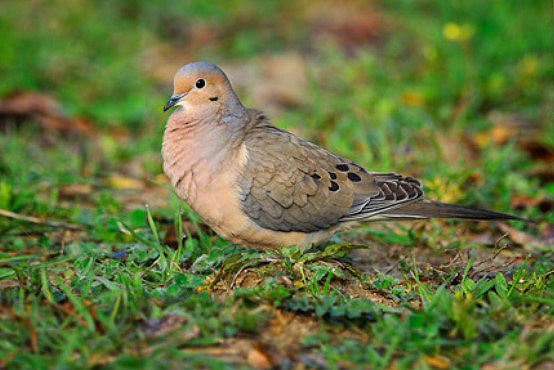Tes Jolly

The mourning dove (Zenaida macroura), holds a special place in the hearts of many gamekeepers. Dove hunting season, in the South particularly, is highly anticipated and signals the end of summertime doldrums and the return to fall hunting afield with friends, family and dogs. It’s arguably the most popular game bird in North America providing challenging sport and delicious table fare. Traditional group dove hunts are true social events—fast and furious shooting while following college football games, kids and dogs as bird retrievers, and then followed up by belt-busting pot-luck dinners, fellowship and more football.
No other bird matches the mourning dove’s widespread distribution (300-400 million birds), ranging from Central America, almost all of the United States and into southern Canada. Mourning doves are migratory, so northern populations must migrate south each winter to avoid harsh weather. This is likely why “opening day” is much more of a thing in the South; in the northern tier of states, their migration has often begun before the hunting season opens.
The United States Fish & Wildlife Service (USFWS) sets limits and season length, but defers to state Cooperative Extension Systems as the experts for establishing standards to define normal agricultural operations within individual states.
Dove hunting contributes millions of dollars in revenue nationally each year through excise taxes collected on ammunition and firearms. Mourning doves are well managed overall and rank “Least Concern” in conservation status. Seed blends like Biologic’s WhistleBack, Blind Spot or Guide’s Choice all will attract mourning doves as well as other upland birds.
Named for the male’s soft, plaintive cooing call, mourning doves (or rain doves), mate for life. Weighing just four to six ounces, mourning doves are prolific breeders. In warm areas a pair may produce up to six broods of two young per year. Fast breeding is essential because mortality averages 60-70 percent per year. Seeds comprise nearly all of its diet, including wild grasses, weeds, herbs, cultivated grasses and occasionally berries.
Six Facts About Mourning Doves
Did you know the mourning dove…
- Is fed “crop milk” for the first few days after hatching? It’s a substance produced in the parent’s crop. Young doves, called squabs, fledge at about two weeks old.
- Is a supreme shooter’s challenge? The “gray-feathered mini missiles” can achieve flight speeds up to 55 mph!
- Is primarily a seed eater and consumes 12-20 percent of its body weight daily?
- Drinks by suction without tilting or lifting its head? Watering occurs mainly at dawn and dusk.
- Can drink brackish spring water (up to almost half the salinity of seawater) without becoming dehydrated as humans would?
- Can survive for decades? One of the oldest recorded was a male, banded in Georgia in 1968 and shot in Florida in 1998, at the ripe old age of 30 years and four months.



























